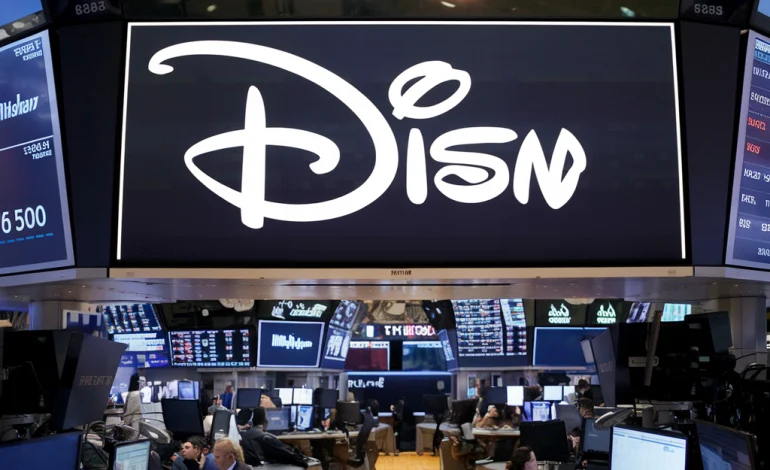Disney Stock: A FintechZoom Look at the Current Market Position

Disney has always enjoyed a special oppulence in every individual’s life. With its animated wonders all the way to magical theme parks, it would be impossible not to know this company. But beyond the enchanting stories and characters lies a fascinating investment opportunity: Disney stock. This paper will discuss a snapshot of Disney’s position in today’s unstable financial environment to help potential investors. In this post, we will take a closer look to the Disney’s stock price over a historical period as well as factors determining the current position and future potential of this legend in the entertainment industry. It’s one thing to invest in a fintechzoom disney stock, but it’s another thing entirely to see the trends over time That’s why we have put together this list for you to have a glimpse of what awaits in this website whether you are an investor interested in adding another company to your portfolio or just a curious person who wants to know more about the trends in a certain stock.
Historical Performance of Disney Stock
Disney stock has a rich history, reflecting the company’s evolution from animation pioneer to global entertainment giant. Initially traded in 1962 at just $13.88 per share, it experienced significant growth over the decades.
The launch of Disney in late 2019 marked a pivotal moment. Investors saw potential as streaming became essential during the pandemic. The stock soared as subscribers flocked to the platform.
However, volatility isn’t new for Disney shares. Economic downturns and shifting consumer preferences have led to fluctuations over time. Major events like acquisitions and theme park openings also impacted overall performance.
In recent years, investors faced challenges due to external factors such as market competition and changing media consumption habits. Despite these ups and downs, Disney’s brand remains strong across diverse segments like film, merchandise, and parks—each contributing uniquely to its legacy in finance.
Factors Affecting the Current Market Value of Disney Stock
Several factors play a crucial role in determining the current market value of Disney stock. First and foremost, consumer spending trends significantly influence revenue streams from parks, merchandise, and media. As disposable income fluctuates, so does attendance at theme parks.
Another key element is subscriber growth for Disney+. The streaming service has become a significant player in the entertainment landscape. Its performance impacts investor sentiment directly.
Content production costs also weigh heavily on financial projections. High-quality productions require substantial investment but can yield impressive returns when executed well.
Regulatory changes are another consideration. Any shifts in copyright laws or international trade agreements can impact operations abroad.
Macroeconomic conditions like inflation rates and interest rates create an overall environment affecting all stocks, including Disney’s. This complex interplay shapes how investors view Disney’s future prospects in the bustling entertainment industry.
Competitors in the Entertainment Industry
The entertainment industry is a vibrant, competitive landscape. Disney faces fierce rivals that continuously challenge its market dominance. Companies like Netflix have revolutionized content consumption. Their subscription-based model attracts millions globally, reshaping how audiences engage with media.
Amazon Prime Video also poses a significant threat. With its vast library and original programming, it draws viewers away from traditional studios. Then there’s the emergence of streaming giants like HBO Max and Apple TV+. Each brings unique offerings to the table, intensifying competition.
Traditional networks are not sitting idle either. They adapt by launching their own streaming platforms while producing original content to capture audience interest.
This evolving environment pushes Disney to innovate constantly. Balancing legacy properties with new ventures is crucial for maintaining relevance in this saturated marketplace where every move counts in shaping viewer preferences and loyalty.
Opportunities for Growth and Potential Risks for Disney Stock
Disney stock presents several intriguing opportunities for growth. The expansion of Disney+ has been a game-changer, attracting millions of subscribers worldwide. This platform continues to evolve with exclusive content, which could boost revenues significantly.
Theme parks are also on the road to recovery. As travel restrictions ease and consumer confidence returns, attendance is expected to rise. This resurgence can lead to increased spending on experiences and merchandise.
However, potential risks loom large. Competition in streaming services is fierce; rivals are constantly launching new platforms and original content that could lure customers away from Disney+.
Further, there seem to be susceptibilities to diverse economic conditions whereby persons may not afford to spend money in entertainments such as movies or theme parks. These factors should provide investors with the considerations when they consider the future prospects in Disney stock against the promising but somewhat volatile environment.
The Impact of COVID-19 on Disney’s Financials
The COVID-19 pandemic hit the entertainment industry hard, and Disney was no exception. Theme parks shuttered, cruise lines were suspended, and theatrical releases faced significant delays.
This disruption led to a dramatic decline in revenue for the company. In 2020 alone, Disney reported losses that shook investor confidence. The once-bustling parks turned silent overnight.
Streaming services became a lifeline during this period. With theaters closed, more viewers flocked to Disney+. This surge partially offset some losses but wasn’t enough to bridge the financial gap created by park closures.
Disney’s diverse portfolio allowed it to adapt somewhat quickly. However, recovery will take time as consumer habits continue shifting post-pandemic. As restrictions ease and visitors return, investors remain watchful of how these changes impact future earnings reports.
Expert Opinions on the Future Performance of Disney Stock
Analysts have mixed feelings about Disney stock’s trajectory. Some experts view it as a resilient choice, buoyed by the company’s diverse portfolio and strong brand loyalty. The expansion of Disney+ is often highlighted as a game changer, with its potential to capture new subscribers and drive revenue growth.
On the flip side, others caution investors about rising competition in streaming services. With platforms like Netflix and Amazon Prime constantly evolving, maintaining subscriber engagement remains crucial for Disney.
Financial analysts also point out that cost-cutting measures could bolster margins in the short term. However, concerns linger over long-term sustainability if content spending continues to rise.
Investor sentiment is influenced by broader economic conditions too. Inflationary pressures may impact discretionary spending on entertainment—a factor that cannot be ignored when assessing future performance.
Conclusion:
As long as investors try to compare what they have to offer and decide this is the right time to invest in a Disney stock. First, the company has something valuable inculculturalterms, namely, a vast experience and extremely popular brands. However, there are recent changes in it – especially due to the advent of the COVID-19 pandemic – that have even changed the financial structure of some of the countries.
Disney’s shift towards streaming service shows that there is scope to look for other avenues of revenue. As witnessed by Disney’s new entrant Disney+ the outlook is that the company is equally capable of shifting to new consumption models. However for the purpose of this work competition in this area is stiff.
The industry most associated with this trend is the entertainment industry and it is evident oft still growing at a fast pace. However, competitors have been able to cut into the market share and they may not be enough brand loyalty to support Disney. Shareholders should also take to account how these dynamics play out with respect to the factors influencing discretionary purchasing power.









